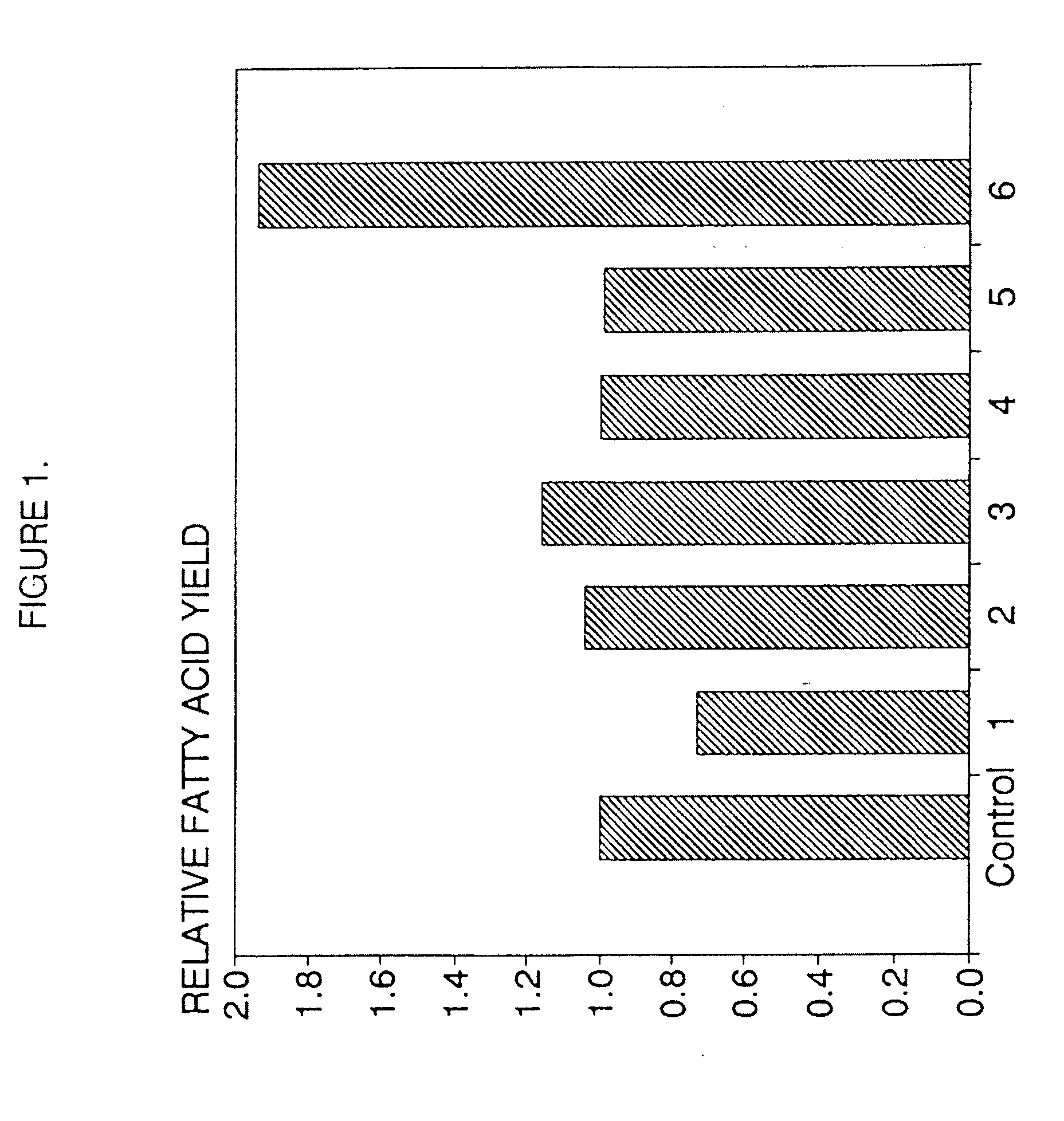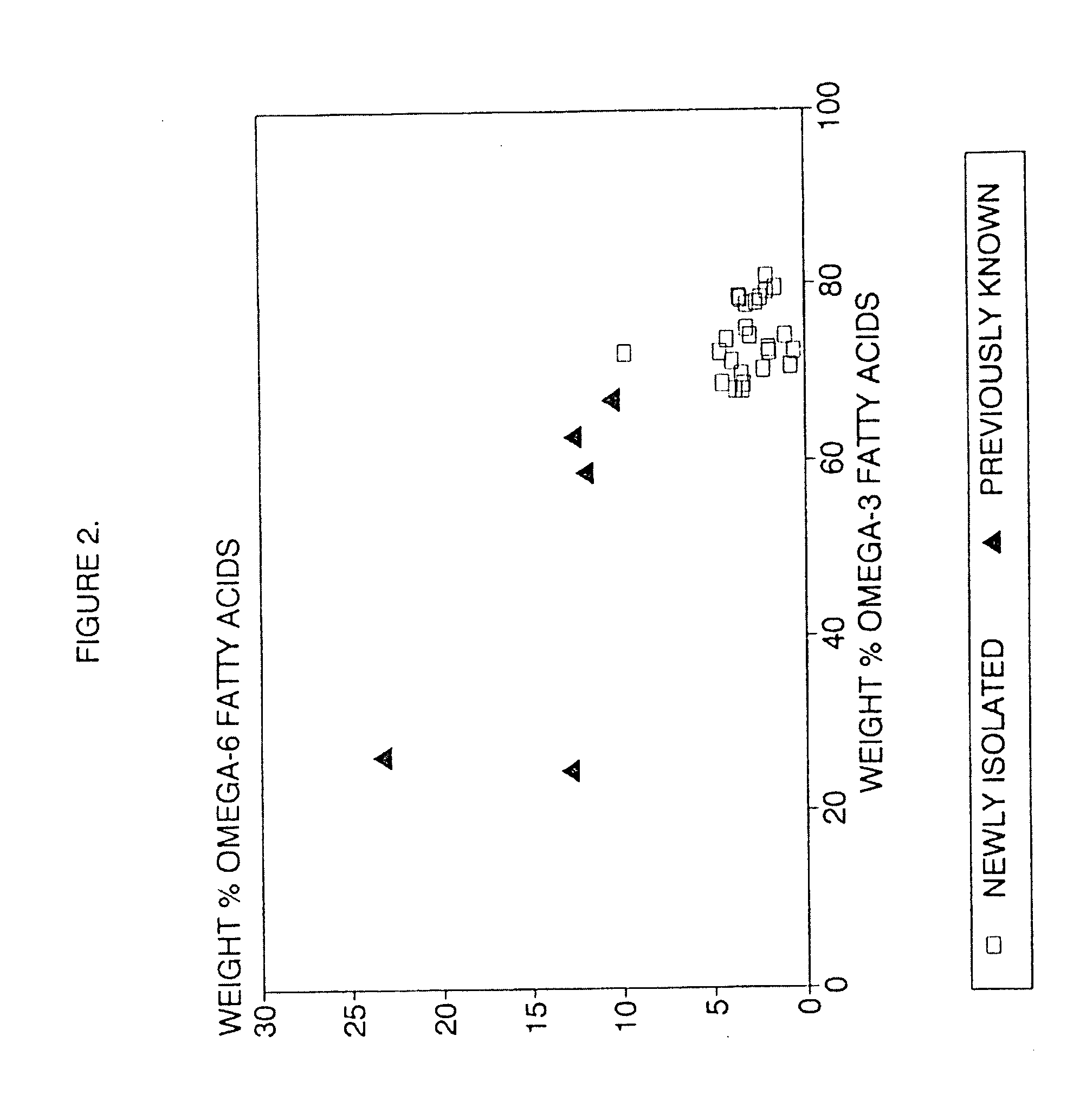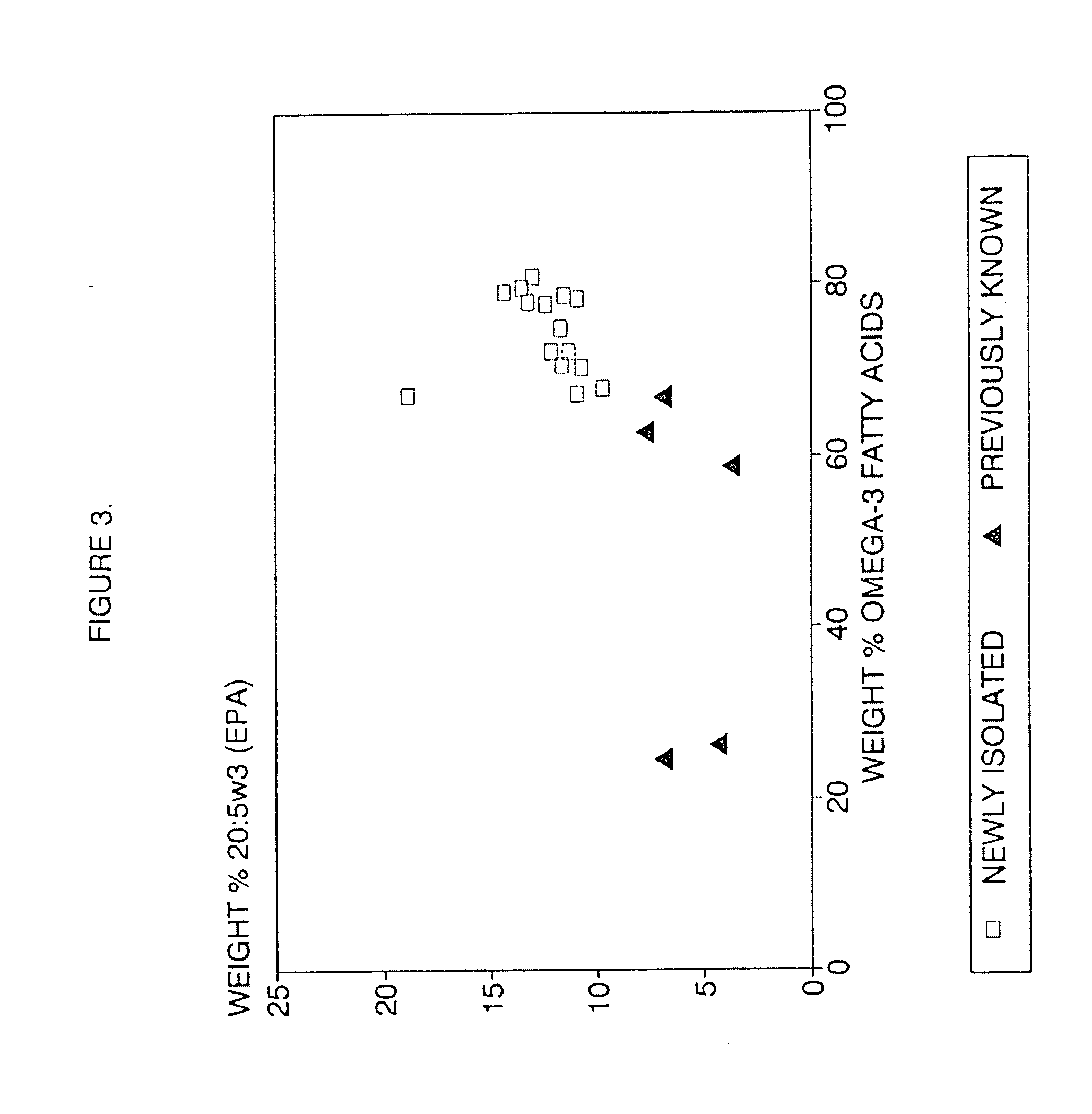Process for the heterotrophic production of microbial products with high concentrations of omega-3 highly unsaturated fatty acids
a technology of highly unsaturated fatty acids and heterotrophic organisms, which is applied in the field of heterotrophic organisms, can solve the problems of high doses of these vitamins that are unsafe, kidney problems or blindness, and oil supplements, and achieve the effect of increasing the bioavailability of the omega-3 hufas contained therein and preventing degradation of the omega-3 hufas
- Summary
- Abstract
- Description
- Claims
- Application Information
AI Technical Summary
Benefits of technology
Problems solved by technology
Method used
Image
Examples
example 1
Collection and Screening
[0073] A 150 ml water sample was collected from a shallow, inland saline pond and stored in a sterile polyethylene bottle. Special effort was made to include some of the living plant material and naturally occurring detritus (decaying plant and animal matter) along with the water sample. The sample was placed on ice until return to the laboratory. In the lab, the water sample was shaken for 15-30 seconds, and 1-10 ml of the sample was pipetted or poured into a filter unit containing 2 types of filters: 1) on top, a sterile 47 mm diameter Whatman #4 filter having a pore size about 25 μm; and 2) underneath the Whatman filter, a 47 mm diameter polycarbonate filter with about 1.0 μm pore size. Given slight variations of nominal pore sizes for the filters, the cells collected on the polycarbonate filter range in size from about 1.0 μm to about 25 μm.
[0074] The Whatman filter was removed and discarded. The polycarbonate filter was placed on solid F-1 media in a p...
example 2
Maintaining Unrestricted Cell Growth: Phosphorus
[0076] Cells of Thraustochytrium sp. U42-2 (ATCC No. 20891), a strain isolated by the method in Example 1, were picked from solid F-medium and inoculated into 50 ml of modified FFM medium (Fuller et al., 1964). This medium containing: seawater, 1000 ml; glucose, 1.0 g; gelatin hydrolysate, 1.0 g; liver extract, 0.01 g; yeast extract, 0.1 g; PII metals, 5 ml; 1 ml B-vitamins solution (Goldstein et al., 1969); and 1 ml of an antibiotic solution (25 g / l streptomycin sulfate and penicillin-G) 1.0 ml of the vitamin mix (pH 7.2) contains: thiamine HCl, 200 μg; biotin, 0.5 μg; cyanocobalamin, 0.05 μg; nicotinic acid, 100 μg; calcium pantothenate, 100 μg; riboflavin, 5.0 μg; pyridoxine HCl, 40.0 μg; pyridoxamine 2HCl, 20.0 μg; p-aminobenzoic acid, 10 μg; chlorine HCl, 500 μg; inositol, 1.0 mg; thymine, 0.8 mg; orotic acid, 0.26 mg; folinic acid, 0.2 μg; and folic acid, 2.5 μg. 250 ml erlenmeyer flasks with 50 ml of this medium were placed on ...
example 3
Maintaining Unrestricted Growth: PO4 and Yeast Extract
[0077] Cells of Schizochytrium aggregatum (ATCC 28209) were picked from solid F-1 medium and inoculated into 50 ml of FFM medium. The culture was placed on a rotary shaker (200 rpm) at 27° C. After 3-4 days, 1 ml of this culture was transferred to 50 ml of each of the following treatments: 1) FFM medium (as control) ; and 2) FFM medium with the addition of 250 mg / l KH2PO4 and 250 mg / l yeast extract. These cultures were placed on a rotary shaker (200 rpm) at 27° C. for 48 hr. The cells were harvested and the yield of cells quantified. In treatment 1, the final concentration of cells on an ash-free dry weight basis was 616 mg / l. In treatment 2, the final concentration of cells was 1675 mg / l, demonstrating the enhanced effect of increasing PO4 and yeast extract concentrations in the culture medium.
PUM
| Property | Measurement | Unit |
|---|---|---|
| time | aaaaa | aaaaa |
| densities | aaaaa | aaaaa |
| temperatures | aaaaa | aaaaa |
Abstract
Description
Claims
Application Information
 Login to View More
Login to View More - R&D
- Intellectual Property
- Life Sciences
- Materials
- Tech Scout
- Unparalleled Data Quality
- Higher Quality Content
- 60% Fewer Hallucinations
Browse by: Latest US Patents, China's latest patents, Technical Efficacy Thesaurus, Application Domain, Technology Topic, Popular Technical Reports.
© 2025 PatSnap. All rights reserved.Legal|Privacy policy|Modern Slavery Act Transparency Statement|Sitemap|About US| Contact US: help@patsnap.com



